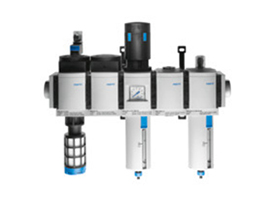FESTO (Festo) Branch Module MS6 - FRM - 1/2 Introduction
FESTO (Festo), as a globally renowned supplier of automation technology, is known for its products' high quality, innovative design, and superior performance. The branch module MS6 - FRM - 1/2 is one of many outstanding products from Festo and is widely used in the field of industrial automation.
The MS6 - FRM - 1/2 branch module is mainly used in pneumatic systems, where it can perform the functions of gas distribution and branching. This module features a compact design that saves installation space and is particularly suitable for use in industrial environments with limited space. Its housing is made of robust and durable materials, providing good protection and able to withstand various harsh industrial production environments such as high temperatures, humidity, and dust.
In terms of interfaces, the MS6 - FRM - 1/2 is equipped with a standard 1/2 interface, which is highly versatile and facilitates connections with other pneumatic components. Whether connecting to air supply equipment or to actuators, it can be easily achieved, providing convenience for the construction of pneumatic systems.
Features of FESTO (Festo) Branch Module MS6 - FRM - 1/2
Firstly, this branch module has excellent flow characteristics. It is carefully designed to ensure smooth gas flow within the module, reducing pressure loss. This means that when using MS6 - FRM - 1/2 in pneumatic systems, the air source can be utilized more effectively, improving the system's efficiency. For example, in some industrial equipment with high gas flow requirements, this module can meet the needs of rapid response and stable gas supply.
Secondly, the MS6 - FRM - 1/2 has good sealing properties. Its sealing structure has been optimized to effectively prevent gas leakage. In industrial production, gas leakage can not only cause waste of energy but may also affect the normal operation of the system. Festo's branch module ensures the reliability of sealing performance by using high-quality sealing materials and precise manufacturing processes, significantly reducing the risk of gas leakage.
Furthermore, the installation and maintenance of this module are very convenient. It adopts a modular design concept, allowing users to flexibly combine and install according to actual needs. During the installation process, no complex tools or operations are required, saving a lot of time and labor costs. At the same time, in terms of maintenance, due to its simple structure, parts are easy to disassemble and replace, allowing for quick repairs and handling in case of failure, reducing equipment downtime.
Additionally, the MS6 - FRM - 1/2 has good compatibility. It can seamlessly cooperate with other Festo pneumatic products, such as solenoid valves, cylinders, etc., to build a complete pneumatic control system. This compatibility makes it more convenient for users when constructing pneumatic systems, allowing them to choose suitable products for combination according to different application scenarios, achieving the best control effect.
Branch module MS6-FRM-1/2 belongs to the Compressed Air Treatment series under FESTO company, model number MS6-FRM-1/2. To purchase or inquire about Branch module MS6-FRM-1/2, you can directly contact 158 0047 0089 (Mr. He).



